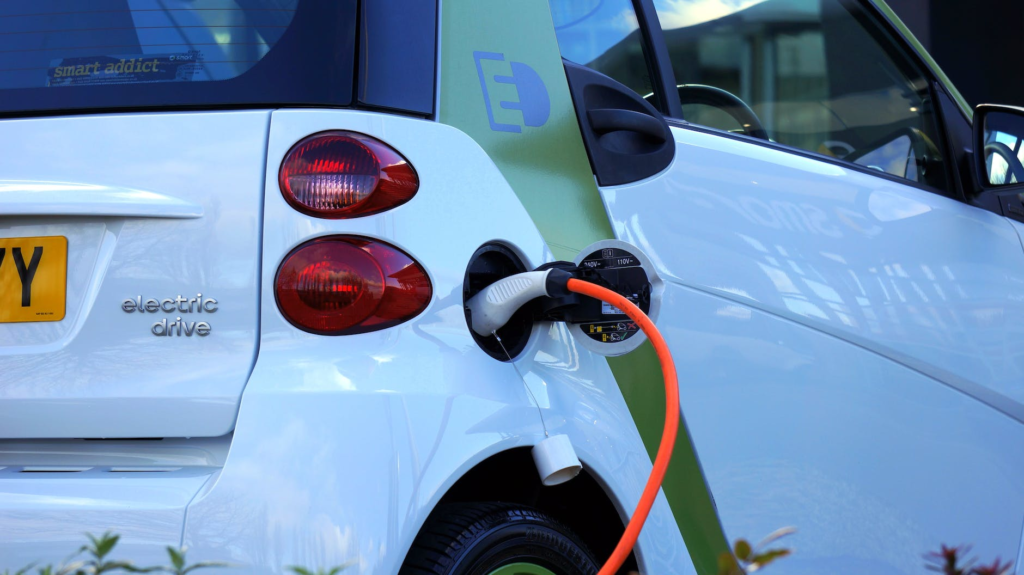Table of Contents

Photo by Mike Bird on Pexels.com
“Embrace the future of green mobility with our state-of-the-art electric charging stations. Power up your electric vehicles conveniently and sustainably, reducing your carbon footprint one charge at a time. Join the clean energy revolution and drive confidently into a cleaner, greener tomorrow.”
Introduction:
Electric vehicles (EVs) have captured the world’s attention as a promising solution to reduce emissions and combat climate change. As more individuals and businesses embrace the electric revolution, the need for a robust charging infrastructure becomes increasingly critical. In this blog, we will delve into the significance and impact of a vast network of 1000+ electric charging stations, exploring how they are revolutionizing transportation and shaping the future of sustainable mobility.
The Need for Extensive Charging Infrastructure
The limited availability of charging stations has been a significant barrier to widespread EV adoption. Range anxiety, the fear of running out of charge and being stranded, has plagued potential EV owners. To address this concern, a comprehensive and widespread charging infrastructure is vital. An extensive network of charging stations enables EV owners to travel longer distances with peace of mind, eliminates range anxiety, and encourages more individuals to transition to electric vehicles.
The Rise of 1000+ Electric Charging Stations
Over the past decade, the deployment of electric charging stations has seen remarkable growth. Governments, private companies, and organizations worldwide have recognized the urgency of building a robust charging infrastructure to support the increasing number of EVs on the roads. Today, we stand on the brink of an exciting milestone: a network of 1000+ electric charging stations.
The significance of surpassing the 1000-station mark cannot be overstated. It represents a tangible milestone demonstrating the commitment to electrification and the accelerated pace of EV adoption. With an extensive network, drivers will have access to convenient charging options, fostering confidence in EV ownership and making electric vehicles a viable choice for daily commuting and long-distance travel.
Powering the Future: Key Features of the Charging Stations
The 1000+ electric charging stations are not just numerous but also advanced in their capabilities. These charging stations are designed to deliver high power output, enabling faster charging times. With technologies like DC fast charging, EVs can be charged to 80% or more in a matter of minutes, providing a level of convenience comparable to refueling a conventional vehicle.
Moreover, these charging stations are built to be compatible with a wide range of electric vehicle models, promoting interoperability and ensuring that drivers have access to charging infrastructure regardless of their vehicle brand. The stations are strategically located in key areas, including urban centers, highways, and popular destinations, to cater to the diverse charging needs of EV owners.
Benefits and Impact
The extensive network of 1000+ electric charging stations offers numerous benefits and has a profound impact on various fronts. First and foremost, it significantly reduces carbon emissions, as EVs produce zero tailpipe emissions when powered by electricity generated from renewable sources. By encouraging the transition to electric transportation, the charging infrastructure plays a crucial role in combating air pollution and improving urban air quality.
Furthermore, the expansion of charging stations stimulates economic growth. It creates job opportunities in manufacturing, installation, and maintenance of charging infrastructure, as well as in the renewable energy sector. The development of a charging network also attracts private investments, fostering innovation and entrepreneurship in the EV industry.
Real-world examples showcase the advantages of an extensive charging infrastructure. Countries like Norway and the Netherlands, with their comprehensive charging networks, have experienced a surge in EV adoption. These nations serve as inspiration, demonstrating that an abundant charging infrastructure encourages a shift towards sustainable transportation and brings tangible environmental and economic benefits.
Overcoming Challenges and Future Outlook
While the progress in building 1000+ electric charging stations is commendable, challenges remain. Expanding charging infrastructure requires significant investment, coordination among stakeholders, and overcoming regulatory and logistical hurdles. Issues such as grid capacity, ensuring equitable access to charging stations, and standardization of charging protocols need to be addressed to unlock the full potential of the charging network.
However, the future outlook for electric charging stations is promising. Collaborative efforts between governments, private sector entities, and utilities are driving progress. Innovative solutions like smart grid integration and battery storage are being explored to optimize charging infrastructure and balance the load on the electrical grid. Furthermore, advancements in technology, such as wireless charging and ultra-fast charging capabilities, hold immense potential to revolutionize the charging experience and further enhance the appeal of electric vehicles.
Conclusion
The remarkable growth of 1000+ electric charging stations marks a significant milestone in the journey towards sustainable mobility. By addressing range anxiety and supporting the widespread adoption of EVs, these charging stations are powering the future. The benefits of a vast charging network extend beyond emissions reduction, encompassing economic growth and job creation. Although challenges remain, the collaborative efforts and technological advancements in the charging infrastructure sector paint a promising picture of a greener and more electric future.
FAQ
Q1: How many electric charging stations are there in the USA?
A1: As of my knowledge cutoff in September 2021, there were over 43,000 public electric charging stations in the USA. However, please note that this number may have increased since then as the electric vehicle infrastructure continues to grow.
Q2: What types of electric charging stations are available in the USA?
A2: In the USA, you can find different types of electric charging stations. The most common types are Level 1, Level 2, and DC fast charging. Level 1 charging uses a standard household outlet (120 volts) and is relatively slower. Level 2 charging requires a dedicated charging unit (240 volts) and provides faster charging times. DC fast charging, also known as Level 3 charging, offers the fastest charging speeds and is typically found along highways and in commercial areas.
Q3: How long does it take to charge an electric vehicle at a charging station?
A3: The charging time depends on several factors, including the battery capacity of the electric vehicle and the charging power of the station. Level 1 charging can take around 8 to 12 hours to fully charge a vehicle, Level 2 charging can range from 4 to 8 hours, while DC fast charging can provide an 80% charge in approximately 20 to 30 minutes, depending on the vehicle and the charging station’s power output.
Q4: How much does it cost to charge an electric vehicle at a charging station?
A4: The cost of charging an electric vehicle at a charging station varies depending on the station’s pricing structure, the region, and the electric utility rates. Charging costs may be based on a flat rate per charging session or per kilowatt-hour (kWh) of electricity consumed. It is advisable to check with the charging station operator or use mobile apps or websites that provide information on charging station locations and pricing details.
Q5: Where can I find electric charging stations in the USA?
A5: Electric charging stations can be found in various locations across the USA. They are commonly found in public areas such as shopping centers, parking lots, restaurants, and along major highways. Charging station networks like Tesla Supercharger, Electrify America, and ChargePoint have extensive coverage throughout the country. Additionally, many smartphone apps and websites provide maps and directories of charging station locations, making it easier to find the nearest one.

